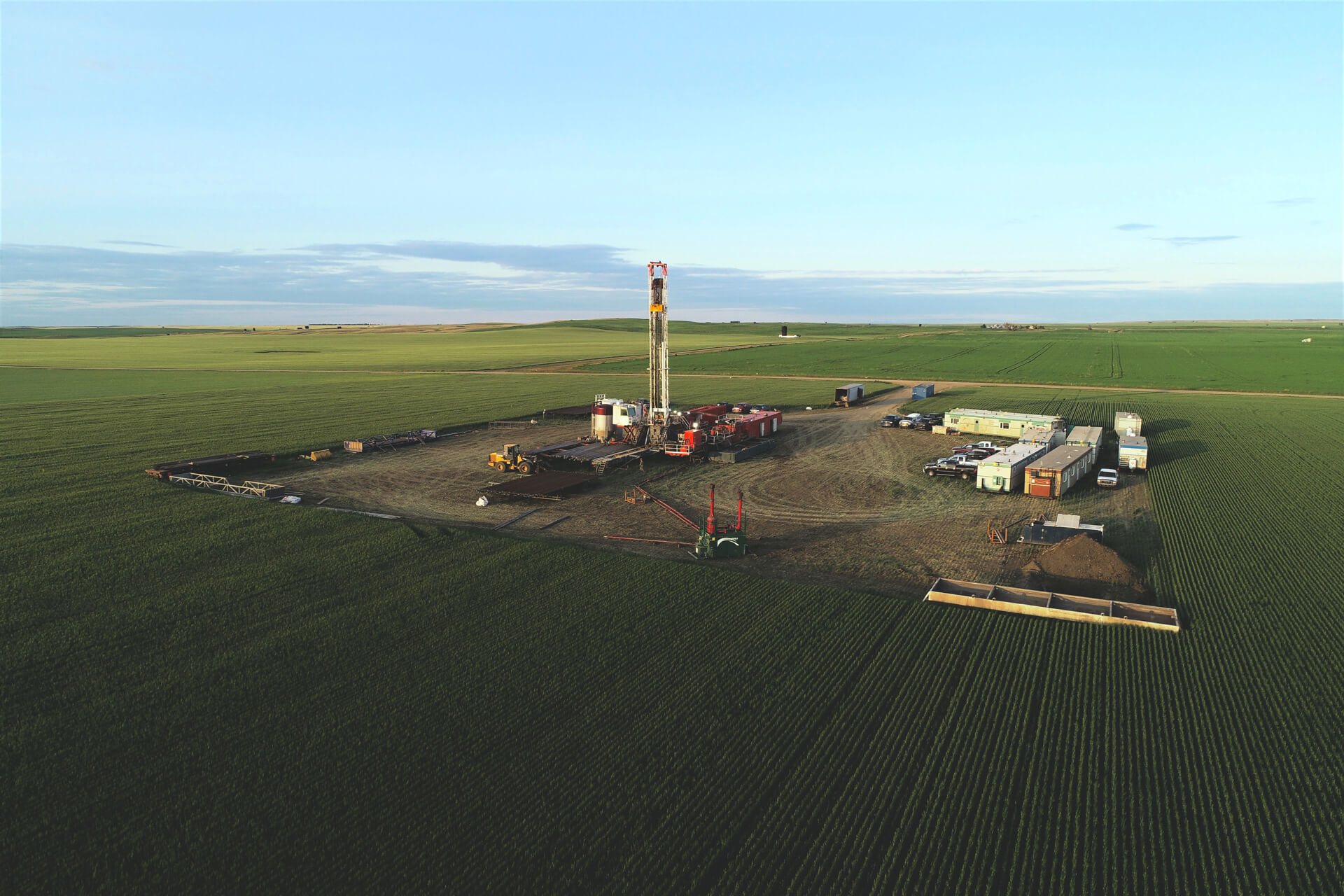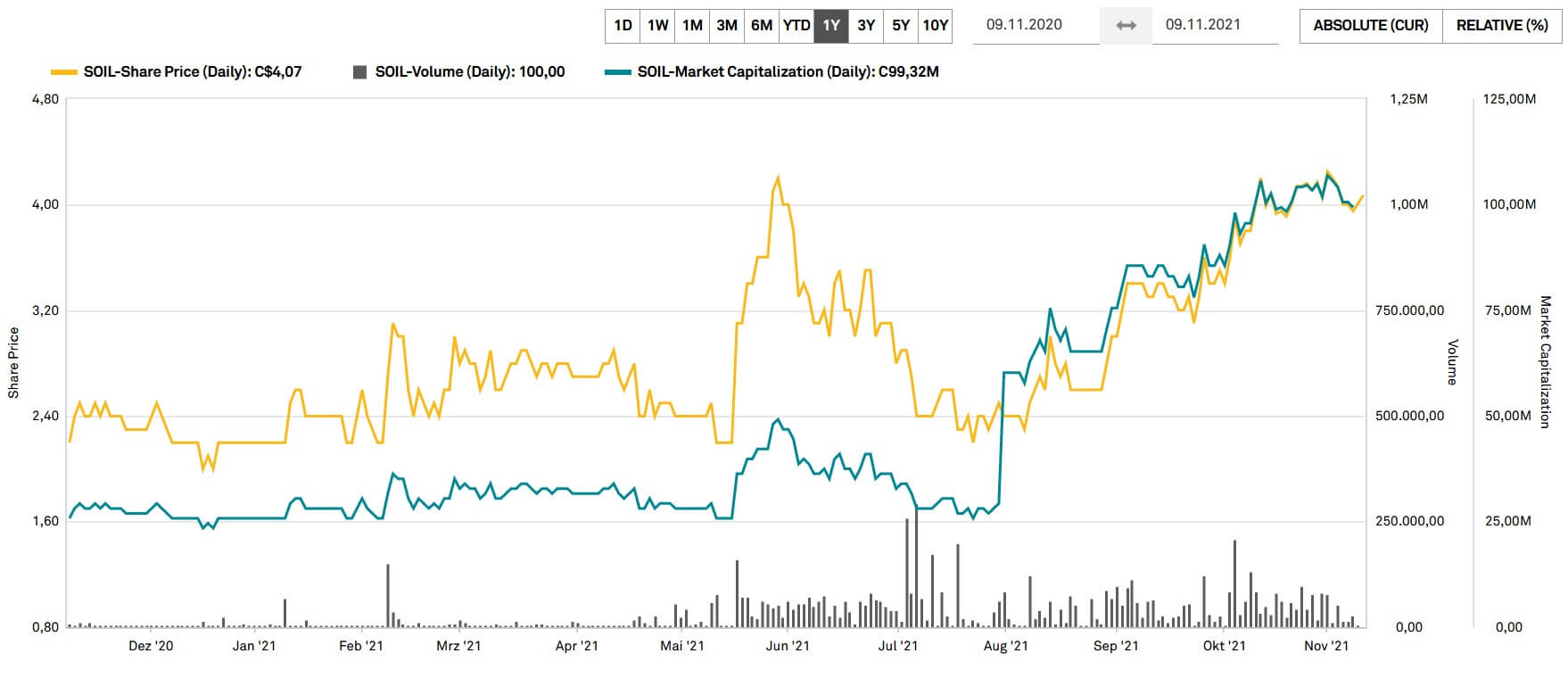
The global oil market is currently celebrating a renaissance
Especially due to the steady growth of the global economy, more and more energy is in demand. Despite climate agreements and the restructuring of economies to achieve CO2 neutrality, the world will not be able to do without oil for many decades to come. After all, the EU and Germany have set a target date for CO2 neutrality of 2050 and 2045, respectively, but neither the implementation nor the plans for it have yet taken hold.
The protagonists, however, are sure that "green energy production" should initiate a decommissioning of fossil raw material exploitation. The active proposals of the governments can still be described as inadequate, and the issue of nuclear power is also viewed differently around the world. What Germany in particular is changing positively in its energy landscape is being turned into the opposite in some of its European neighbors as a welcome boon. France and Great Britain will gradually expand their nuclear power in order to save Germany from a blackout.
According to OPEC estimates, oil will still account for 28% of the energy mix in 2045. From the point of view of the oil-dependent countries, this is a justifiable decline, as oil is currently still the main source of energy, contributing around 30% to global supply security.
Climate protectionists will probably not support this view. The consensus, however, is that a significant decline in the use of coal is expected. According to experts, the share of energy supply via coal is expected to drop from around 26% to 17%, and this probably includes the Chinese share.
Against this background and in the knowledge of the lack of political clout in important markets, oil production can be expected to remain robust over the next 25 years. Interim booms in the economy can probably only be met with oil anyway, since an ad hoc adjustment to the increased demand is technically possible in a short time.
"Saturn aims to lead the oil industry in both executional excellence and corporate stewardship. Our focus will remain to maximize shareholder value in the context of Saturn being at the forefront of what it means to be a corporate citizen."
A Saskatchewan pearl goes full throttle
Canada is an important raw material country for the Western industrialized nations. The reserves of metals and energy sources there will ensure the world's supply for years to come.
Saturn Oil & Gas Inc. is a fast-growing Canadian energy company based in Calgary that is focused on developing high-quality, light oil assets in the province of Saskatchewan. Management's objectives are supported by a well-defined acquisition strategy targeting high-grade properties.
Saturn already has an attractive portfolio of high-yield drilling locations that can be operated with low production declines over the medium term. The Company owns assets in southeast and western Saskatchewan that provide an extensive inventory of long-term economic drilling opportunities in multiple zones.
With a high commitment to building an ESG-focused culture, Saturn's goal is to grow reserves, production and cash flow while generating an attractive return on invested capital.
Game-Changer: Strategic Acquisition of Oxbow
With the acquisition of the giant Oxbow oil field in the southeastern province of Saskatchewan in May 2021, the company became a relevant oil producer in the Canadian province overnight.
Approximately 7,000 BOE/day is currently produced by the company per day and the acquisition, which was partially financed by debt, is expected to be repaid within just under two years, by mid-2023. The loan repayment has already been secured through pre-sales of crude oil and the remaining cash will be invested in expanding crude oil production.
By mid-2023, Saturn Oil & Gas could have already expanded oil production per day to 10,000 BOE/day, as over 500 potential new or expandable wells have already been identified. Thus, at a WTI crude oil price of USD 65 per barrel, daily sales would grow from the current level of approximately USD 450,000 to approximately USD 650,000.
The current price of over USD 80 in WTI still gives Saturn's prospects some planning certainty with room to run. With the completed acquisition, Satun Oil & Gas is breaking completely new ground and is on the verge of significant growth leaps in sales, profits and size. After paying off the external debt in 2023, the internal financing power will grow and put the company on very robust feet.

The NI 51-101 valuation of the Oxbow property.
Saturn Oil & Gas Inc. has had the oil and gas reserves of its recently acquired Oxbow asset in Saskatchewan evaluated by independent auditors in accordance with the strict requirements of National Instrument 51-101 (Standards of Disclosure for Oil and Gas Activities). The so-called "Oxbow Report" was prepared by Ryder Scott Company-Canada, one of the oldest and most respected oil and gas asset valuation firms in Canada. The report puts proved and probable reserves at 43.3 million barrels of oil equivalent (BOE).
Result: The net present value of future net sales (net of royalties, operating costs and capital expenditures, including asset retirement obligations) before income taxes, calculated using a 10% discount rate of total proved and probable reserves, as adjusted, is estimated at CAD 435.7 million, or CAD 17.4 per outstanding share. Saturn had only acquired the assets in June 2021 for a net CAD 76.8 million.
Since acquiring the production of 6,700 barrels of light oil, a new era has begun for Saturn Oil & Gas. The transaction was fully completed retroactive to April 1 with an implementation date of June 7, 2021, and has since offered shareholders a special perspective. In total, oil and gas equivalent to over CAD 520,000 per day has been sold in the first 23 days of the new Saturn as of the end of Q2 2021. If production continues as it has, at least CAD 90 million will be added by year-end.
During the presentation of the latest quarterly figures, it came to light that there are over 500 wells that are currently not producing. These could provide additional production volumes of up to 3,500 barrels per day after reworking.
One of the most striking features of Saturn Oil & Gas is that it is well below the radar of its peer group in almost all industry comparisons. For more detail on this statement, see BEACON Securities Ltd's Initial Coverage Report, October 20, 2021 1 .
Share consolidation creates institutional interest
The stock is likely to appear on the shopping lists of international investors in the near future. Not only because the company trades at a single-digit price-to-earnings ratio based on 2022. 2 standing with institutional investors has been elevated to a new level by the 20-for-1 reverse stock split that was decided upon and implemented in October 2021, as the move marked an exit from the age of the penny stock. This should not only go down well with North American investors but also with the many German investors.
The current price target of analysts is at least 10.00 Canadian dollars or EUR 6.40
If one calculates the current production rates against the debt repayments and interest payments to be made, this results in a plausible target of CAD 10.00 for 2022 after the reverse stock split, which would correspond to a P/E ratio of about 4. Comparable oil stocks from the USA are valued with multiples between 8 and 16.
Even if the size comparison is somewhat lopsided: If you compare the company with the next cheapest oil & gas producer Gazprom, you get a price target of CAD 20.00. That is because Gazprom, one of the world's largest oil and gas producers, is currently trading at a very low P/E ratio of just 8. But even Gazprom is again valued at a significant discount to North American and European groups in this sector. 3
Guidance has already been formulated for 2022, with Saturn Oil & Gas CEO John Jeffrey stating at the International Investment Forum (IIF) in October that EBITDA could rise from the current CAD80 million to around CAD 100 million next year. From this, the company forecasts adjusted net income of CAD 65-70 million within 12 months.
Saturn's shares are listed for trading on the TSXV under the symbol 'SOIL' and on the Frankfurt Stock Exchange under the symbol 'SMKA'.
Canadian analyst firm Beacon Securities last initiated coverage of the stock, rating the shares a "buy" with a price target of CAD 10.15. 4
| Saturn Oil & Gas CAD million | 2020 | 2021e | 2022e | 2023e |
|---|---|---|---|---|
| Revenue | 9.600 | 101.100 | 189.200 | 210.300 |
| Royalities | -400 | -14.100 | -27.100 | -29.400 |
| Operating Cost & Transport | -1.900 | -37.600 | -70.800 | -68.900 |
| General & Administration | -1.300 | -3.900 | -5.000 | -5.600 |
| EBITDA | 6.000 | 45.500 | 86.300 | 106.400 |
| Net Debt | -34.900 | -54.100 | -10.000 | +99.400 |
| Interest | -4.300 | -9.600 | -9.700 | 0 |
| DD&A | -4.600 | -20.200 | -40.500 | -43.000 |
| Taxes | 0 | 3.400 | -1.700 | -4.700 |
| Other | -5.100 | 12.900 | -600 | -600 |
| Net Income | -7.800 | -17.800 | +25.800 | +54.100 |
| EPS Fully Diluted (CAD) | -0,66 | -0,92 | +0,80 | +1,36 |
SWOT analysis: the strength/weakness profile of Saturn Oil & Gas Inc.
Strengths
- Good operational expertise in oil production.
- Access to additional undeveloped wells.
- Low operational costs in production and transportation.
- Employees and engineers with long experience
Weaknesses
- Dependence on spot oil market is temporarily present
- More skilled personnel needed for higher blow rates
- Limiting factor could be availability of drilling rigs
- Cheaper competition from USA, Russia & Far East
Opportunities
- Very good location factors in Saskatchewan
- Energy and resource friendly government
- Expansion friendly environment in Canada for property acquisitions.
- Further acquisitions through M&A activity in a fragmented sector
- Interest from a major in expanding Canadian production
Risks
- Overestimation of crude oil reserves or production declines due to weather conditions
- Change in government attitude towards future oil projects
- New climate protection restrictions for the Canadian oil sector
- Rising prices for necessary input factors
- Changing conditions in the financing of projects
- Sharply falling oil prices with corresponding distortions in the futures market.

Current business figures for the first half of 2021
Commenting on the half-year figures, CEO John Jeffry said:
"We are proud to report a historic quarter in the Company's performance. The acquisition of the Oxbow asset provides an essential platform for Saturn's future growth, particularly as it offers numerous new drilling opportunities and production optimization projects, as well as stable long-term cash flow to fund these initiatives."
Highlights from the quarter include the following:
- Successful completion of the acquisition of assets in the Oxbow area of southeast Saskatchewan for a cash consideration of CAD 76.8 million.
- At closing, Oxbow assets included 6,400 boe/d, 43 million boe of proved and probable reserves, 290,109 ac of land (137,186 undeveloped ac) and over 350 drilling locations (260 booked locations with certified reserves)
- Completion of debt and equity financing of CAD 119.2 million, including a CAD 87.0 million senior secured term loan, a brokered private placement and a non-brokered private placement with combined gross proceeds totaling CAD 32.2 million.
- Operational Highlights: Petroleum and natural gas sales of CAD 12.6 million and adjusted cash flow of CAD 2.9 million in Q2. Closed Q2 with expected net debt of CAD 74.5 million.
Saturn made a revolutionary acquisition by adding the Oxbow asset to its existing operations in Saskatchewan. The company now has a long-term, ongoing source of cash flow that it is reinvesting to enhance shareholder value. The primary focus is to repay debt and concurrent uncommitted cash flow to fund the extensive inventory of production growth projects.
"Maintaining a strong balance sheet is a top priority for Saturn. Accelerating debt repayment increases the company's financial capacity for future acquisitions."
The company has resumed its drilling program, which was suspended with the outbreak of the COVID-19 pandemic in 2020. It has been actively drilling again since the third quarter of 2021. Saturn now has two growth vehicles, the Viking acreage and the Oxbow acreage, which together comprise over 550 identified drilling locations, representing an inventory of over two decades.
Also of significance is the large number of existing but non-producing wells where we see optimization potential for reworking, recompletions and repairs to increase current production rates. Saturn believes it has over 400 non-producing wells on the horizon that the Company can bring back into economic production in the coming years. 
A key focus of management has been on integrating the people and systems required for what is sure to be a challenging increase in operational production. To date, the integration program has proceeded according to plan. The operations team in Carlyle, Saskatchewan, led by Operations Manager Brad Caldwell, consists of a group of industry veterans with extensive experience in the field and directly with Oxbow assets who have now joined Saturn.
The other new additions, Chief Financial Officer Scott Sanborn and Vice President of Corporate Development Kevin Smith, along with a number of other industry experts, have recently joined the Saturn team and have been instrumental in making the transition program as efficient as possible.
"We're reducing our debt to zero in 2023."
The second quarter financial report includes the 23 operating days of the Oxbow asset from June 7, 2021 to the end of the quarter on June 30, 2021. Average daily revenue for this 23-day period was approximately CAD 520,000 and using the second quarter operating valorizations, average uncommitted cash flow was generated of approximately CAD 265,000 per day, net of hedge adjustments.
Based on field estimates, the company's average July 2021 production was 6,700 boe/d (95% oil and natural gas liquids). Saturn expects new production from the drilling and workover programs planned for the second half of 2021 to offset natural declines in the company's pro forma base production to date.
Management: "Cash flow will make us debt free by mid 2023"
Regarding the outlook, there is to report: Management forecasts year-end 2021 exit rate production of approximately 7,000 boe/d. Saturn is prioritizing a strong balance sheet and a disciplined approach to capital spending focused on production growth.
Recent drill results from the Loverna property were released in early November. All three Loverna wells began producing light oil in October 2021 and volumes are consistent with internal production plans.
Accordingly, Justin Kaufmann, Senior Vice-President of Saturn Oil & Gas, expressed, "It was executed in a section not previously explored for the Viking oil formation and delivers the largest production of the three executed wells. This supports the development of five contiguous land sections of Saturn and reduces the risk for up to ten new ERH well locations." This should increase investor confidence and reduce the valuation discount.
Next Report Date: Management looks forward to updating shareholders on consolidated operating results for the third quarter of 2021 on or about November 15, 2021.

